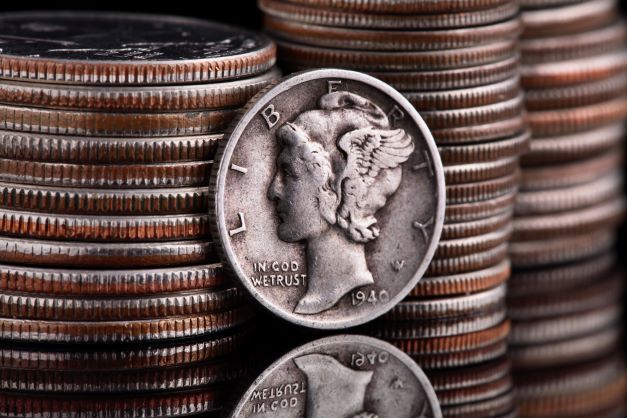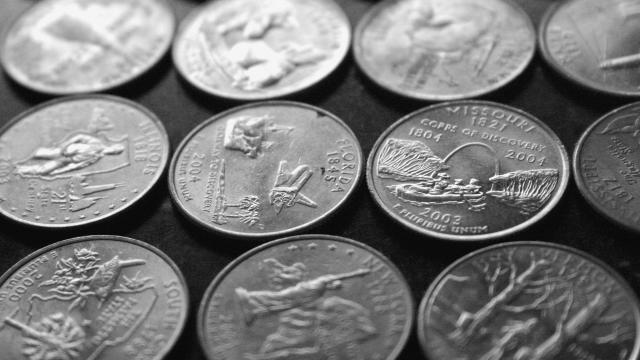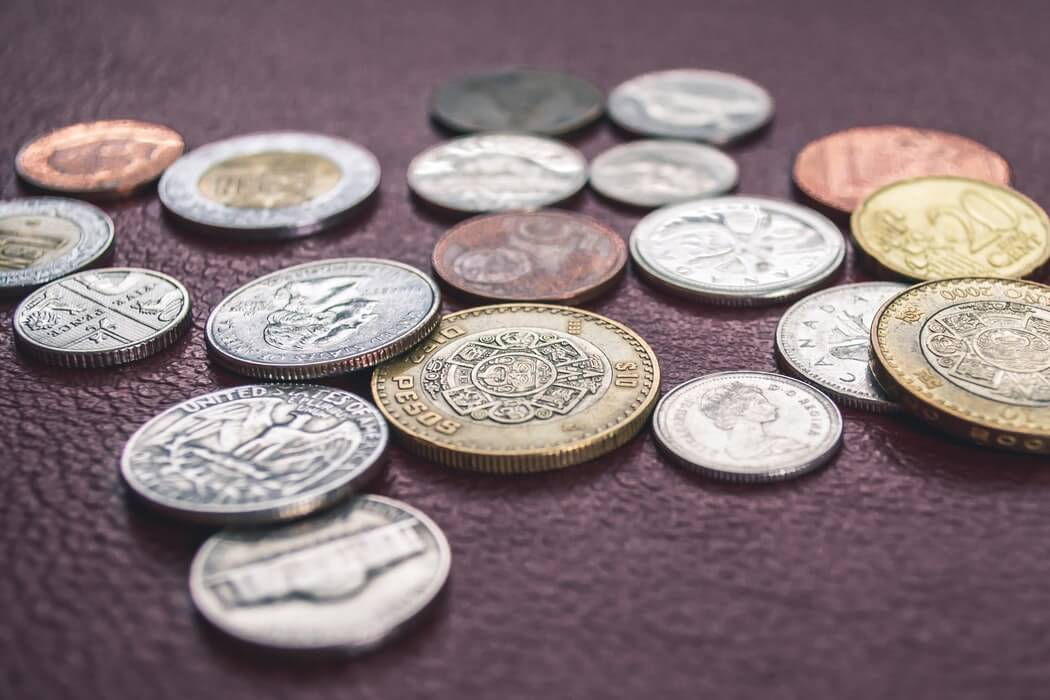What Year Were Silver Nickels Made: The addition of silver nickels to American money is an interesting part of the country’s past. The different compositions of nickels from different times show how the economy and wartime needs changed things. In the 1400s, workers in Germany found a brown-red ore that they thought was copper. This was the start of the journey of silver nickels. Because the copper in this metal was so hard to find, it was called Devils’ Copper, or Kupfer nickel. This name was meant to foreshadow the difficulties that would arise in the search for a nickel-based coin.
In the U.S., nickels changed a lot in terms of what they were made of in the middle of the 1800s. The American nickel used to be a silver half-dime that was 90% silver and 10% copper. Nickels were mostly made of something other than silver after the Shield nickel came out in 1866. Instead, they were mostly made of copper and nickel.
World War II was the most interesting time in the history of silver nickels because the U.S. had a strategic shortage of this important metal and a strategic need for nickel in combat applications. During the years 1942–1945, the Mint changed what was in nickel. As a result, military nickels, also called “silver nickels,” were made. These nickels had a unique mix of 35% silver, 56% copper, and 9% manganese.

What Years Are Silver Nickel Years?
It was during the “silver nickel years” that nickels with silver in them were made. To keep it short, this period is from 1942 to 1945. A closer look at the bigger picture, on the other hand, shows a more complicated past that shows how silver nickels have changed over time and explains why the metal was briefly included.
These coins, which were first called “silver war nickels,” were made of 75% copper and 25% nickel. From 1942 to 1945, silver was added to the metals, which changed the makeup a lot. This is why the years were called the “silver nickel” years. During these four years, these nickels were made up of 56% copper, 35% silver, and 9% manganese. This made them different from the nickels that came before and after them in terms of their metal make. The reason for this small, short-lived change is our country’s long past and its ability and willingness to adapt to new situations.
The historical context of silver nickels
The history of silver nickels made between 1942 and 1945 is closely linked to the bigger events of World War II. As the battle got tougher, it became clear that important metals for the war effort needed to be saved. An attack has been made on the nickel metal, which is needed to make coins. Because nickels were hard to come by, the U.S. Mint made the very important choice during the war to change what they were made of.
Because nickels were hard to come by, people came up with silver nickels, which were also called “war nickels.” Instead of nickel, 35% silver, 56% copper, and 9% manganese were used to make these coins. Not only did this change solve the problem of shortage, but it also showed how flexible the economy could be during the war.
The silver on nickels from this period is a real piece of history that shows how committed the country was to helping win the war. In times of war and economic trouble, silver nickels are a reminder of how clever and adaptable the American people are. The change in the composition of coins during the silver-nickel era tells a bigger story of how the economy changed during times of war to help the people.
The production of silver nickels
It was between 1942 and 1945, a special time in American coin history, that silver nickels, also called “war nickels,” were made. Due to the needs of WWII, the U.S. Mint changed the amount of metal in nickels, which is different from what they usually are made of. Nickel was a key part of the war, but it was hard to get. In order to save money for the war effort, the Mint will change what’s in nickel.
The normal mix of 75% copper and 25% nickel was changed to 56% copper, 35% silver, and 9% manganese during the silver-nickel years. Due to a lack of nickel, silver was added to the coin on purpose, which visibly changed the physical properties of the nickel. Because of limited resources during the war, this change in makeup set these nickels apart from other coins that had been made.
During this time, the practical way that money was changed to deal with the problems of a world war was shown by the use of silver to make nickels. The silver nickel era was only four years long, but it is known as a unique time in the history of American money by people who collect coins.
Years during which silver nickels
Nickels that have a certain amount of silver in them are called silver war nickels or silver nickels. To sum up, these important years are 1942 through 1945. But if you look closely at the history, development, and logic behind adding silver to the process of making nickel, you’ll find a more complex story.
Nickel was mainly made up of 75% copper and 25% nickel. “Silver nickel” years refers to the years between 1942 and 1945 when silver started to make up a big part of the coins. During this time, these unique nickels were made up of 35% silver, 9% manganese, and 56% copper.
Because of how they are put together, these silver nickels are different from nickels that came after them and from nickels that came before them. Because of restrictions during World War II, the silver nickel years were an interesting time in the history of coins because they were temporarily different from the normal nickel alloy.
Silver nickels last in terms of minting years
From 1942 to 1945, silver nickels were only made for a short time. They were easy to spot because they were made of a different metal. Since silver was added to the money during this short time, it was called the “silver nickel” years. In the past, nickel coins were mostly copper (75%), with 25% nickel. During World War II, however, silver was added to nickel to meet military needs. This showed that nickel was in short supply for military use.
35% silver, 9% manganese, and 56% copper made up silver nickels when they were first made. Adding more metal to them not only made them look different but was also a useful way to meet the war’s resource needs. Even though they didn’t last long, the years when the silver nickel was minted are important to history because they show how flexible money can be when things change. So, these coins are very important in the history of numismatics because they show a time when the basic features of American money changed in a big way for a short time.

What year were silver nickels made?
From 1942 to 1945, the composition of nickels shifted to include silver in its metal content; thus, this four-year span has been labeled “silver nickel” years. Its precise composition included 56% copper, 35% silver, and 9% manganese.
Nickels made of silver could only be made from 1942 to 1945. This happened for four years, called the “silver nickel” years, and it broke the usual nickel makeup. Nickel used to be mostly made up of 25% nickel and 75% copper, and it stayed that way for many years afterward. Because World War II needed a lot of money, the U.S. Mint added silver to nickels.
The silver nickel, which was also called the silver war nickel, had a unique makeup when it was made. Compared to nickels that came before them, these had 35% silver, 9% manganese, and 56% copper. Because of a strategic shortage of nickel during the war—an important metal that was greatly sought after for military uses—silver was added. Coin historians now call the years 1942–1945 the “silver nickel years” because of this. These changes were made in real life during a time of widespread strife.
What year was the first nickel?
1866
The five-cent coin we call the nickel was created in 1866…but the Mint kept making the silver half dime until 1873. So both kinds of five-cent coin were circulating at the same time. The new nickel was larger than the silver half dime and easier to handle.
In the 1400s, German workers found a brown-red ore that they first thought had copper in it. It was called Devils’ Copper, or Kupfernickel because workers couldn’t get copper out of it.
Go back to 1857, when nickel mixed with copper was first used in American coins. Not all of the first “nickels” were made of nickel, but that started to change in 1881 when Switzerland made coins that were made of nickel only.
Nickel’s benefits in a number of popular grades became clear as the 20th century went on, thanks to the development of stainless steel. Nickel-based metals were very useful in chemical plants because they didn’t rust and could handle high temperatures. They also helped make the jet engine possible. Nickel’s demand has grown a lot in the last 100 years because it is so important to many technologies. This trend is still going strong today. Click on the links below to learn more about nickel and what it means in history.
When was the last year of silver nickels?
1945
The composition of U.S. Nickels has changed twice over the last 157 years. They were minted with 35% silver content throughout World War II. The last year for silver nickels was 1945.
In the U.S., silver nickels were first used in 1945. Because of the strategic needs of World War II, the United States tried to save nickel for use in the military during the 1942–1945 silver nickel era. The Mint changed the nickels’ makeup by adding silver to them. A unique mix of 56% copper, 35% silver, and 9% manganese was used instead of the usual mix of 75% copper and 25% nickel.
Due to the needs of the war, nickels were temporarily changed to silver. The war and the production of silver and nickel both finished in 1945. Since then, the U.S. has gone back to using metals mostly made of copper and nickel, just like it did before the war.
The world of numismatics will never be the same without silver nickels. Coin fans love these coins for their unique design and historical value. The short life of the silver nickel era shows how coins can change to fit the needs of the time.
What’s made of nickel?
Nickel-containing household objects include faucets, kitchen utensils, appliances, rechargeable batteries (nickel-cadmium or Ni-Cad variety), jewelry and of course coins. Like the ancients, most of us probably use nickel products without even knowing it.
Nickel is a metal that can be used in many different fields and doesn’t rust. It is needed to make a lot of different things. Producing coins is a common use for nickel. In the beginning, nickel coins were made of copper and nickel metals. In 1881, Switzerland was the first country to make coins out of pure nickel, and soon after, other countries did the same.
These days, nickel alloys are important products in the field of metallurgy. Stainless steels have been around since the early 1900s and have been able to withstand high temperatures and rust. This is in part because they contain nickel. Because of their unique qualities, nickel alloys are used a lot in aerospace engineering to help make jet engines and other parts for planes.
Batteries, including rechargeable batteries for electric cars, are often made with nickel in the electronics business. Strong magnets are used in many technologies, such as radio speakers and electric motors. Nickel is an important part of making them.
Nickel is a great material for plating and coating because it doesn’t rust. This makes things like kitchen appliances, bathroom fixtures, and car parts stronger and better looking. Nickel is also used in the chemical business to make equipment for moving corrosive materials.
Nickel is used in many things, from daily items like coins to key parts of cutting-edge technologies. This shows how important it is in today’s business and technology worlds.
Were old nickels made of silver?
Most nickels contain 75% copper and 25% nickel. However, nickels that were minted between 1942 and 1945 are an exception. During World War II, copper and nickel were in high demand for the war effort. For this reason, nickels minted during this period were made from 35% silver, 56% copper, and 9% manganese.
American old nickels have had different makes over time, and some of them even have silver in them. The change from nickels without silver to nickels with silver is very clear when you look at the history of the materials used for coins.
The American nickel used to be a silver half-dime that was 90% silver and 10% copper. But as the economy grew and more coins were needed, the Mint looked for other options because silver prices were going up. In 1866, the Shield nickel, a metal that was 75% copper and 25% nickel, took the place of silver.
Nickel was hard to come by during WWII because it was being used strategically in military equipment. To help win the war, the U.S. saved coins. During the years 1942–1945, the Mint changed what was in nickel. The composition of these “silver nickels,” or nickels from the war, was 35% silver, 56% copper, and 9% manganese.

Some old nickels were made of silver, but this is only sometimes the case. The early half-dime and the wartime silver nickel are two different times in American coin history when silver was a big part of the coin.
From 1942 to 1945, when the United States made silver nickels, a very important time was marked by the end of World War II. Usually, nickels were made of 75% copper and 25% nickel. However, the needs of the war changed the nickels’ makeup in a big way, which led to the creation of “silver nickels.”
The United States made silver nickels from 1942 to 1945 because there wasn’t enough nickel, which was a key metal for the military during World War II. The Mint changed the nickel’s makeup by adding 36% copper, 56% silver, and 9% manganese. At the time, this one-of-a-kind mix not only worked, but it also left a lasting mark on the history of American money.
These years are important in history because silver nickels show how creatively the country dealt with problems caused by foreign conflict. The term “silver nickels” relates to both a type of metal and the persistence and creativity of people at a crucial point in American history.



